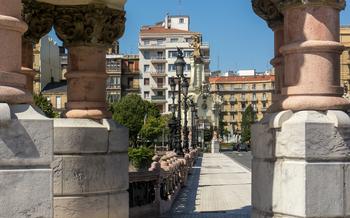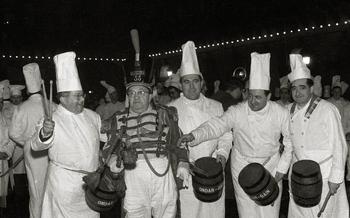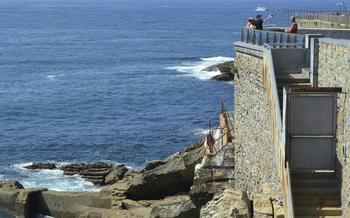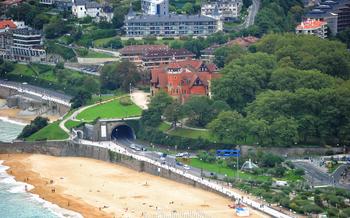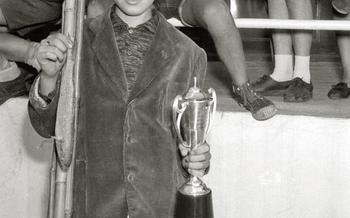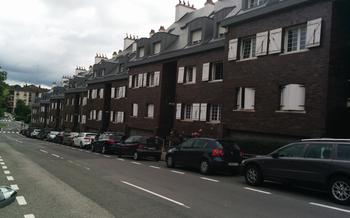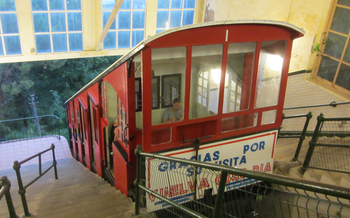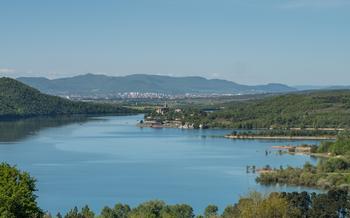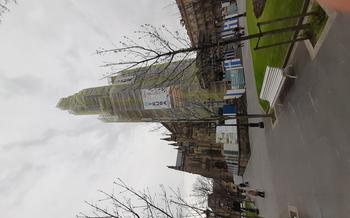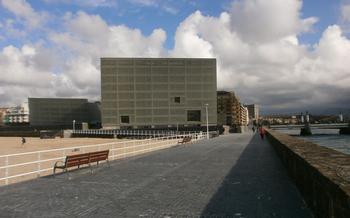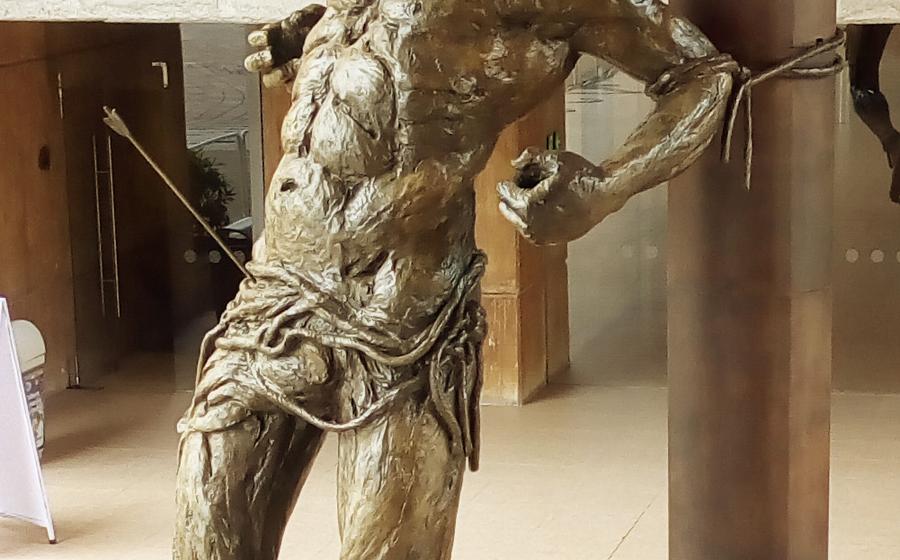
San Sebastián City History Museum
- Location and Accessibility: Exploring the Heart of San Sebastián
- History and Architecture: A Journey Through Time
- Exhibits and Artifacts: Discovering San Sebastián's Past
- San Sebastián's Founding: A Tale of Two Towns
- Urban Development: Witnessing the City's Growth
- Maritime History: Exploring San Sebastián's Seafaring Legacy
- Post-War Recovery and Transformation: A City Rebuilds
- Educational Programs: Engaging Visitors of All Ages
Location and Accessibility: Exploring the Heart of San Sebastián
The San Sebastián City History Museum is conveniently situated in the heart of the city, making it easily accessible for visitors. Nestled in the bustling Parte Vieja (Old Town), the museum is within walking distance from major attractions, including La Concha beach, the Cathedral of the Good Shepherd, and the Plaza de la Constitución.
For those arriving by public transportation, the museum is well-connected by bus and train. Several bus lines stop nearby, and the San Sebastián train station is just a short walk away. Alternatively, visitors can take a scenic stroll through the charming streets of the Old Town to reach the museum.
For those traveling by car, limited street parking is available in the surrounding area. However, it is recommended to use public transportation or park in one of the nearby parking garages to avoid congestion in the city center.
History and Architecture: A Journey Through Time
The San Sebastián City History Museum is a testament to the city's rich past and architectural evolution. Originally built in 1907 as a school, the building itself is a beautiful example of Neo-Basque Renaissance architecture. Its striking façade, adorned with intricate carvings and red brick detailing, hints at the historical treasures within.
Over the years, the building has undergone renovations and expansions, blending its original character with modern elements. The museum's interior features a harmonious mix of restored historical features and contemporary design. Visitors can admire the original wooden beams, arched ceilings, and stained-glass windows, which have been carefully preserved to maintain the building's heritage.
This seamless integration of old and new creates a unique and immersive atmosphere, allowing visitors to experience San Sebastián's history while appreciating the city's embrace of modern design.
Exhibits and Artifacts: Discovering San Sebastián's Past
The San Sebastián City History Museum houses a diverse collection of artifacts that narrate the city's rich history. Thematic exhibitions showcase various aspects of San Sebastián's past, including its founding, urban development, maritime heritage, and cultural traditions. Interactive displays and storytelling exhibits bring history to life, allowing visitors to engage with the city's past in a captivating and educational manner.
One of the highlights of the museum is its collection of archaeological artifacts, which provide a glimpse into the city's earliest inhabitants. Ancient tools, pottery, and jewelry offer insights into the daily lives of the region's prehistoric settlers. The museum also features medieval artifacts, such as weapons, coins, and religious objects, which shed light on the city's role during the Middle Ages.
The maritime history of San Sebastián is well-represented in the museum's exhibits. Model ships, navigational instruments, and fishing gear illustrate the city's strong connection to the sea. Visitors can learn about the rise of the fishing industry and the importance of shipbuilding in San Sebastián's development. Interactive displays allow visitors to experience the thrill of sailing and fishing, immersing them in the city's maritime heritage.
The museum also highlights San Sebastián's vibrant cultural traditions. Visitors can explore exhibits on traditional Basque festivals, such as the Tamborrada and the Semana Grande. The museum showcases traditional costumes, musical instruments, and culinary delights, providing a glimpse into the rich cultural heritage of the Basque Country.
San Sebastián's Founding: A Tale of Two Towns
The history of San Sebastián's founding is a fascinating tale that involves the union of two distinct settlements: Donostia and San Sebastián. The origins of these settlements can be traced back to the Middle Ages, when fishermen and shepherds sought shelter in the area's natural harbor. Over time, these settlements grew and developed their own unique identities.
Donostia, located on the eastern side of the Urumea River, was a fishing village that thrived due to its strategic location and abundant marine resources. San Sebastián, on the western side of the river, was initially a small agricultural settlement that eventually grew into a fortified town.
In 1180, King Sancho VI of Navarre recognized the importance of unifying these two settlements and granted them a charter that allowed them to merge and form a single town. This union marked the official founding of San Sebastián and laid the foundation for its future growth and prosperity.
The museum houses historical documents, maps, and artifacts that provide insights into this pivotal event. Visitors can learn about the negotiations, agreements, and challenges that led to the unification of the two settlements. This chapter of the museum's exhibits sheds light on the origins of San Sebastián and highlights the significance of collaboration and cooperation in shaping the city's history.
Urban Development: Witnessing the City's Growth
San Sebastián's urban development is a fascinating story of transformation, captured vividly in the exhibits of the San Sebastián City History Museum. Interactive maps and timelines allow visitors to trace the city's evolution from a small fishing village to a bustling urban center. Models showcase the changes in the city's layout, revealing the expansion of neighborhoods, the construction of new landmarks, and the impact of urban planning initiatives. Historical photographs and engravings provide a glimpse into the city's past, capturing the essence of its architectural heritage and the changing cityscape. These exhibits offer a comprehensive overview of San Sebastián's urban development, shedding light on the factors that have shaped the city's unique character and identity.
Maritime History: Exploring San Sebastián's Seafaring Legacy
San Sebastián's maritime history is an integral part of its identity. The city's strategic location on the Bay of Biscay has made it a crucial hub for fishing and trade throughout the centuries. The San Sebastián City History Museum delves into this rich maritime heritage, showcasing the rise of the fishing industry, the development of shipbuilding and maritime trade, and the role of the port in the city's development.
Interactive displays bring to life the stories of San Sebastián's seafaring past. Visitors can learn about the traditional fishing techniques used by Basque fishermen and the evolution of shipbuilding methods over the centuries. Models of historic ships, including whaling vessels and merchant ships, provide a glimpse into the city's maritime prowess.
The museum also highlights the importance of the port in San Sebastián's economic and social development. Visitors can explore interactive maps and timelines that trace the growth of the port and its impact on the city's trade and commerce. Historical photographs and engravings offer a visual representation of the bustling port activities of the past.
Through its maritime exhibits, the San Sebastián City History Museum provides visitors with a comprehensive understanding of the city's deep connection to the sea and its enduring seafaring legacy.
Post-War Recovery and Transformation: A City Rebuilds
In the aftermath of the Spanish Civil War, San Sebastián embarked on a remarkable journey of recovery and transformation. The city's resilience and determination shone brightly as it rose from the ashes of conflict to become the vibrant and modern city it is today.
The reconstruction efforts were multifaceted, encompassing both physical and social rebuilding. Damaged buildings were repaired or replaced, and new infrastructure was developed to support the city's growing population. Schools, hospitals, and other essential services were established, laying the foundation for a better future.
The city's economic recovery was fueled by a combination of factors. The fishing industry, which had been severely affected by the war, was revitalized and expanded. Tourism also played a crucial role in San Sebastián's resurgence. The city's natural beauty, mild climate, and cultural attractions drew visitors from around the world, contributing to its economic growth and development.
As San Sebastián rebuilt and transformed, it embraced new ideas and influences. Modern architecture began to reshape the city's skyline, blending seamlessly with the traditional Basque style. The city also became a hub for culture and innovation, hosting prestigious film festivals and attracting renowned artists and intellectuals.
The post-war period marked a turning point in San Sebastián's history. It emerged from the shadows of conflict as a thriving and cosmopolitan city, ready to embrace the future with optimism and determination.
Educational Programs: Engaging Visitors of All Ages
The San Sebastián City History Museum recognizes the importance of education and offers a range of programs designed to engage visitors of all ages. School groups can participate in interactive workshops that bring history to life, with hands-on activities, storytelling sessions, and guided tours tailored to different grade levels. Families are welcome to explore the museum together, with family-friendly activities that encourage parents and children to learn and discover side by side. Interactive learning experiences, such as touch screens, multimedia presentations, and virtual reality displays, make history accessible and enjoyable for all. These educational programs not only foster a love for history and culture but also create lasting memories for visitors of all ages.
